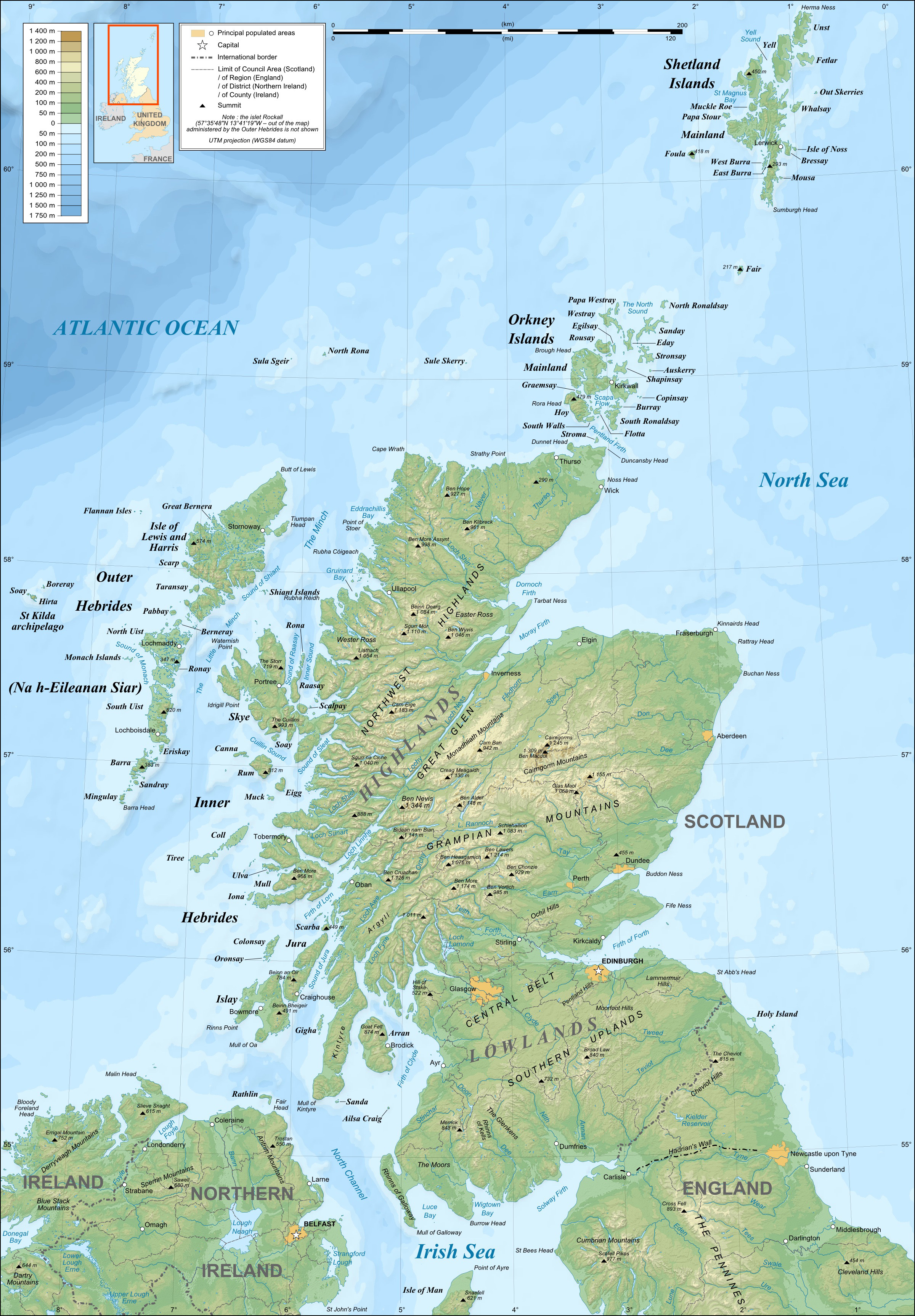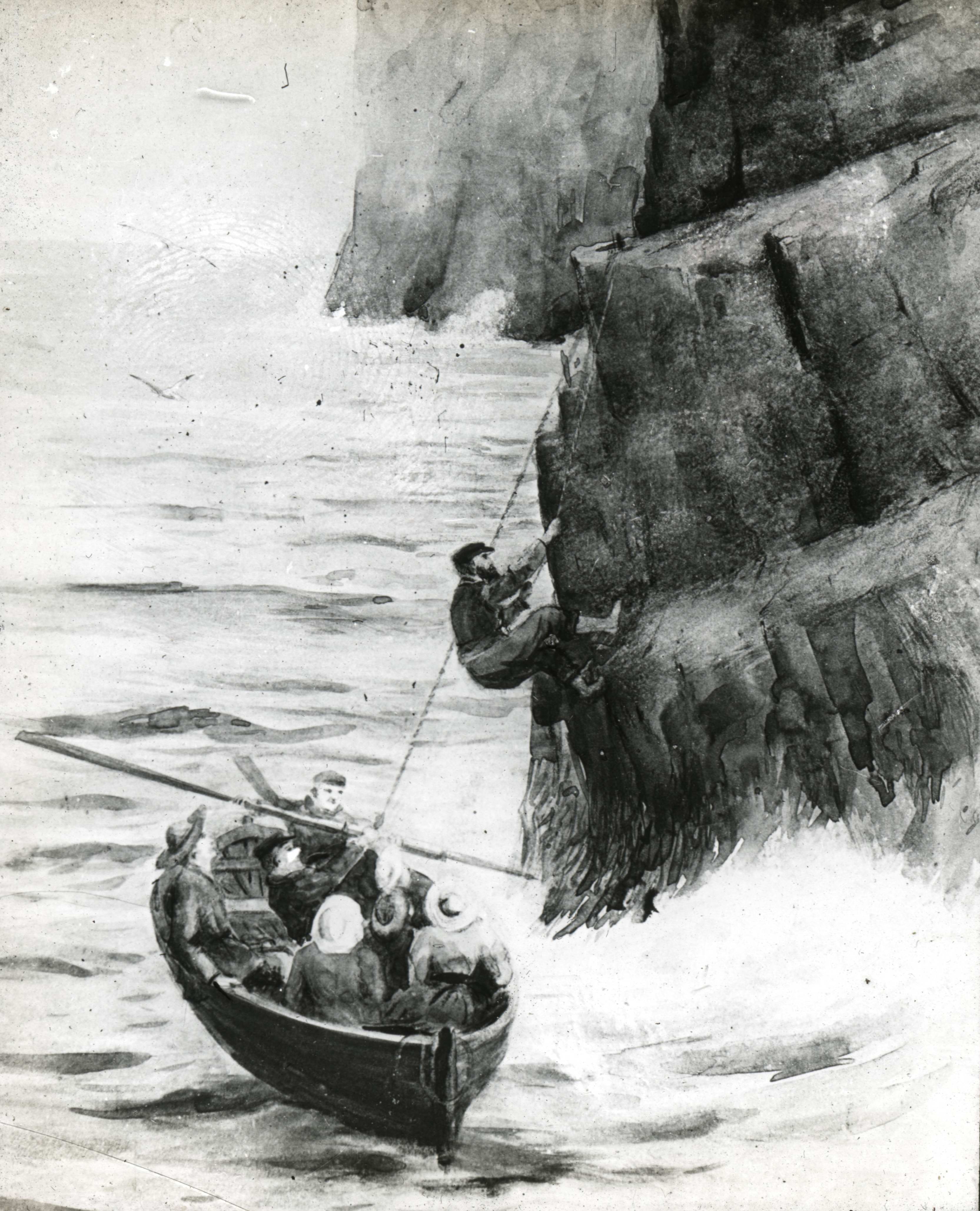|
Stac Levenish
Stac Levenish or Stac Leibhinis (sometimes simply called Levenish/Leibhinis) is a sea stack in the St Kilda archipelago in Scotland. Lying off Village Bay on Hirta, it is part of the rim of an extinct volcano that includes Dùn, Ruaival and Mullach Sgar. The stack is high. Its north cliff appears to have the profile of a human face, visible when travelling to St Kilda from the east. The skerry of Na Bodhan lies to the north east. The stack was climbed recreationally in the early 1900s; Norman Heathcote mentions a moderately difficult ascent in 1900, as part of a climbing expedition that also included an ascent of Stac Lee. See also * List of outlying islands of Scotland * Pareidolia Pareidolia (; ) is the tendency for perception to impose a meaningful interpretation on a nebulous stimulus, usually visual, so that one sees an object, pattern, or meaning where there is none. Common examples are perceived images of animals, ... References External links Pictu ... [...More Info...] [...Related Items...] OR: [Wikipedia] [Google] [Baidu] |
St Kilda, Scotland
St Kilda ( gd, Hiort) is an isolated archipelago situated west-northwest of North Uist in the North Atlantic Ocean. It contains the westernmost islands of the Outer Hebrides of Scotland. The largest island is Hirta, whose sea cliffs are the highest in the United Kingdom; three other islands ( Dùn, Soay and Boreray) were also used for grazing and seabird hunting. The islands are administratively a part of the Comhairle nan Eilean Siar local authority area. The origin of the name ''St Kilda'' is a matter of conjecture. The islands' human heritage includes numerous unique architectural features from the historic and prehistoric periods, although the earliest written records of island life date from the Late Middle Ages. The medieval village on Hirta was rebuilt in the 19th century, but illnesses brought by increased external contacts through tourism, and the upheaval of the First World War contributed to the island's evacuation in 1930. The story of St Kilda has attracted arti ... [...More Info...] [...Related Items...] OR: [Wikipedia] [Google] [Baidu] |
Skerry
A skerry is a small rocky island, or islet, usually too small for human habitation. It may simply be a rocky reef. A skerry can also be called a low sea stack. A skerry may have vegetative life such as moss and small, hardy grasses. They are often used as resting places by animals such as seals and birds. Etymology The term ''skerry'' is derived from the Old Norse ', which means a rock in the sea (which in turn derives from the Proto-Indo-European root *''sker''-, "cut", in the sense of a rock cut off from the land). The Old Norse term ' was brought into the English language via the Scots language word spelled or . It is a cognate of the Scandinavian languages' words for ''skerry'' – Icelandic, fo, sker, da, skær, sv, skär, no, skjær / skjer, found also in german: Schäre, fi, kari, et, skäär, lv, šēra, lt, Šcheras and russian: шхеры (). In Scottish Gaelic, it appears as ', e.g. Sula Sgeir, in Irish as '','' in Welsh as '','' and in Manx as ''.'' ... [...More Info...] [...Related Items...] OR: [Wikipedia] [Google] [Baidu] |
Pareidolia
Pareidolia (; ) is the tendency for perception to impose a meaningful interpretation on a nebulous stimulus, usually visual, so that one sees an object, pattern, or meaning where there is none. Common examples are perceived images of animals, faces, or objects in cloud formations, seeing faces in inanimate objects, or lunar pareidolia like the Man in the Moon or the Moon rabbit. The concept of pareidolia may extend to include hidden messages in recorded music played in reverse or at higher- or lower-than-normal speeds, and hearing voices (mainly indistinct) or music in random noise, such as that produced by air conditioners or fans. Scientists have taught computers to use visual clues to "see" faces and other images. Etymology The word derives from the Greek words ''pará'' (, "beside, alongside, instead f) and the noun ''eídōlon'' (, "image, form, shape"). The German word was used in articles by Karl Ludwig Kahlbaum—for example in his 1866 paper "" ("On Delusion ... [...More Info...] [...Related Items...] OR: [Wikipedia] [Google] [Baidu] |
List Of Outlying Islands Of Scotland
The outlying islands of Scotland are not part of the larger archipelagos and island groups of Scotland—the Hebrides, the Northern Isles or the Islands of the Forth and Clyde estuaries. None of these islands are currently inhabited and few of them ever were, although Hirta was occupied from the Neolithic age until 1930 and Stroma was permanently occupied until the 1970s and thereafter by lighthouse keepers and their families until 1996. Several other outlying islands have lighthouses, none of which is still staffed. In this list, an island is defined as "land that is surrounded by seawater on a daily basis, but not necessarily at all stages of the tide, excluding human devices such as bridges and causeways". A complication relating to membership of this list is that there are various descriptions of the scope of the Hebrides, the large group of islands that lie off Scotland's west coast. The ''Collins Encyclopedia of Scotland'' describes the Inner Hebrides as lying "east ... [...More Info...] [...Related Items...] OR: [Wikipedia] [Google] [Baidu] |
Scottish Mountaineering Club
Established in 1889, the Scottish Mountaineering Club is the leading club for climbing and mountaineering in Scotland. History The Scottish Mountaineering Club (SMC) was formed in 1889 as Scotland’s national club and the initial membership of a hundred was very much a cross section of the ‘great and the good’ of Scottish society, many of whom had an interest in mountains and mountaineering, without necessarily actually being mountaineers. The founder-member who is now most well known is Hugh Munro, who catalogued the distinct 3000 foot mountains of Scotland, now known as “ The Munros”, and “Munro Baggers” are people who focus on climbing them all. The SMC keeps a list of those who wish to record their ‘compleation’ of the Munros and, at the time of writing in 2021, approximately 6,600 people have “compleated”. Membership The SMC consists of experienced and competent climbers and mountaineers, both men and women, who have a commitment to climbing in Scotlan ... [...More Info...] [...Related Items...] OR: [Wikipedia] [Google] [Baidu] |
Norman Heathcote
John Norman Heathcote (21 June 1863 – 16 July 1946) was a British author, watercolourist and photographer, who wrote the book ''St Kilda'', published in 1900, about the Scottish Hebrides, Hebridean archipelago of St Kilda, Scotland, St Kilda. Family and biography Norman Heathcote was the second child and eldest son of John Moyer Heathcote and Louisa Cecilia MacLeod who married in 1860. His father (whose mother was the youngest daughter of Nicholas Ridley-Colborne, 1st Baron Colborne) was a barrister and distinguished amateur player of real tennis. His mother was the eldest child of Norman MacLeod of MacLeod, Norman Macleod, 25th chief of Clan Macleod. As a child Norman lived in London, Brighton and at Conington Castle. Heathcote was born in 1863 and attended Eton College and then Trinity College, Cambridge from 1882, where he took a BA degree in 1885. He became a Justice of the Peace in 1906 and was High Sheriff of Huntingdonshire in 1917/18. On his father's death in 1912, h ... [...More Info...] [...Related Items...] OR: [Wikipedia] [Google] [Baidu] |
Outer Hebrides
The Outer Hebrides () or Western Isles ( gd, Na h-Eileanan Siar or or ("islands of the strangers"); sco, Waster Isles), sometimes known as the Long Isle/Long Island ( gd, An t-Eilean Fada, links=no), is an island chain off the west coast of mainland Scotland. The islands are geographically coextensive with , one of the 32 unitary council areas of Scotland. They form part of the archipelago of the Hebrides, separated from the Scottish mainland and from the Inner Hebrides by the waters of the Minch, the Little Minch, and the Sea of the Hebrides. Scottish Gaelic is the predominant spoken language, although in a few areas English speakers form a majority. Most of the islands have a bedrock formed from ancient metamorphic rocks, and the climate is mild and oceanic. The 15 inhabited islands have a total population of and there are more than 50 substantial uninhabited islands. The distance from Barra Head to the Butt of Lewis is roughly . There are various important preh ... [...More Info...] [...Related Items...] OR: [Wikipedia] [Google] [Baidu] |
Hirta
Hirta ( gd, Hiort) is the largest island in the St Kilda archipelago, on the western edge of Scotland. The names (in Scottish Gaelic) and ''Hirta'' (historically in English) have also been applied to the entire archipelago. Now without a permanent resident population, the island had nearly all of St Kilda's population of about 180 residents in the late 17th century and 112 in 1851. It was abandoned in 1930 when the last 36 remaining inhabitants were evacuated to Lochaline on the mainland. The National Trust for Scotland owns the entire archipelago. It became one of Scotland's six World Heritage Sites in 1986 and is one of the few in the world to hold mixed status for both its natural and cultural qualities."World Heritage: United Kingdom of Great Britain and Northern Ireland" UNESCO. Re ... [...More Info...] [...Related Items...] OR: [Wikipedia] [Google] [Baidu] |
Scotland
Scotland (, ) is a Countries of the United Kingdom, country that is part of the United Kingdom. Covering the northern third of the island of Great Britain, mainland Scotland has a Anglo-Scottish border, border with England to the southeast and is otherwise surrounded by the Atlantic Ocean to the north and west, the North Sea to the northeast and east, and the Irish Sea to the south. It also contains more than 790 Islands of Scotland, islands, principally in the archipelagos of the Hebrides and the Northern Isles. Most of the population, including the capital Edinburgh, is concentrated in the Central Belt—the plain between the Scottish Highlands and the Southern Uplands—in the Scottish Lowlands. Scotland is divided into 32 Subdivisions of Scotland, administrative subdivisions or local authorities, known as council areas. Glasgow, Glasgow City is the largest council area in terms of population, with Highland (council area), Highland being the largest in terms of area. Limi ... [...More Info...] [...Related Items...] OR: [Wikipedia] [Google] [Baidu] |


.jpg)



